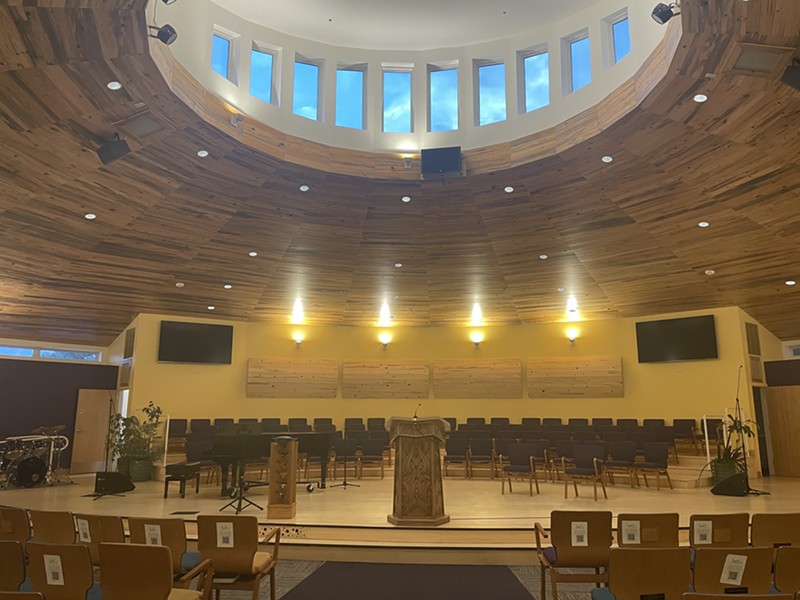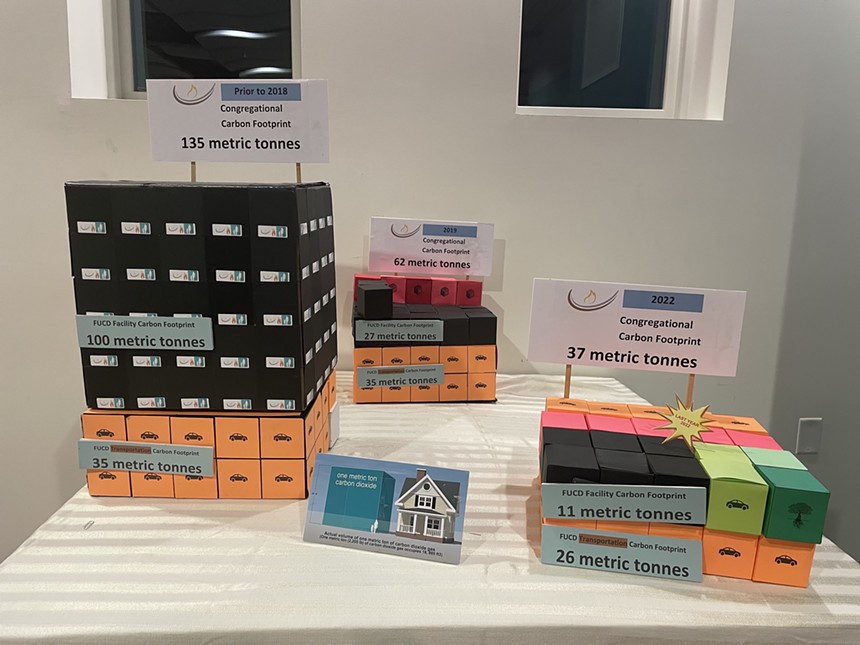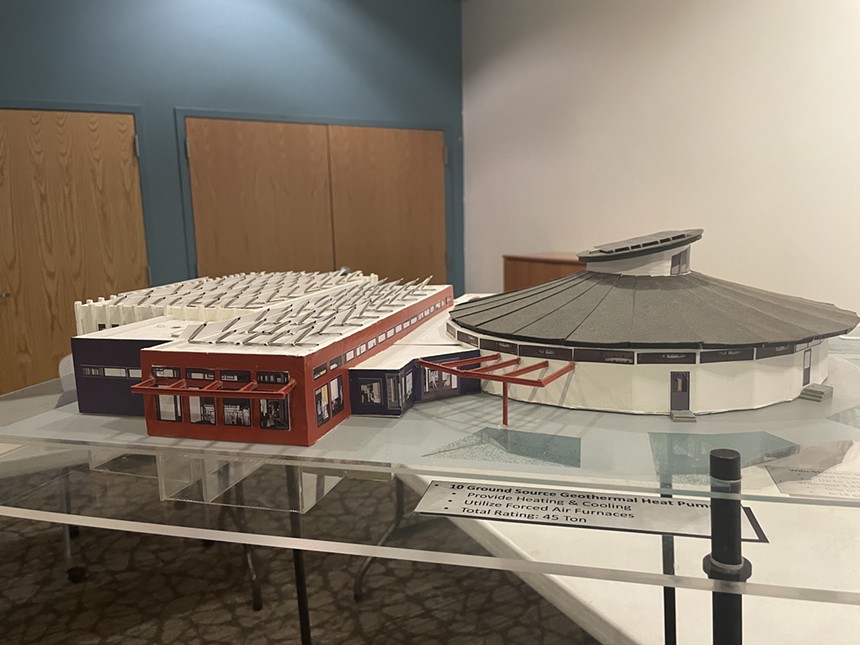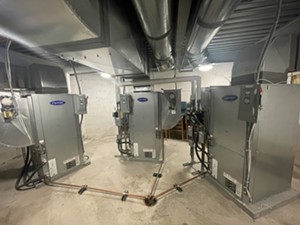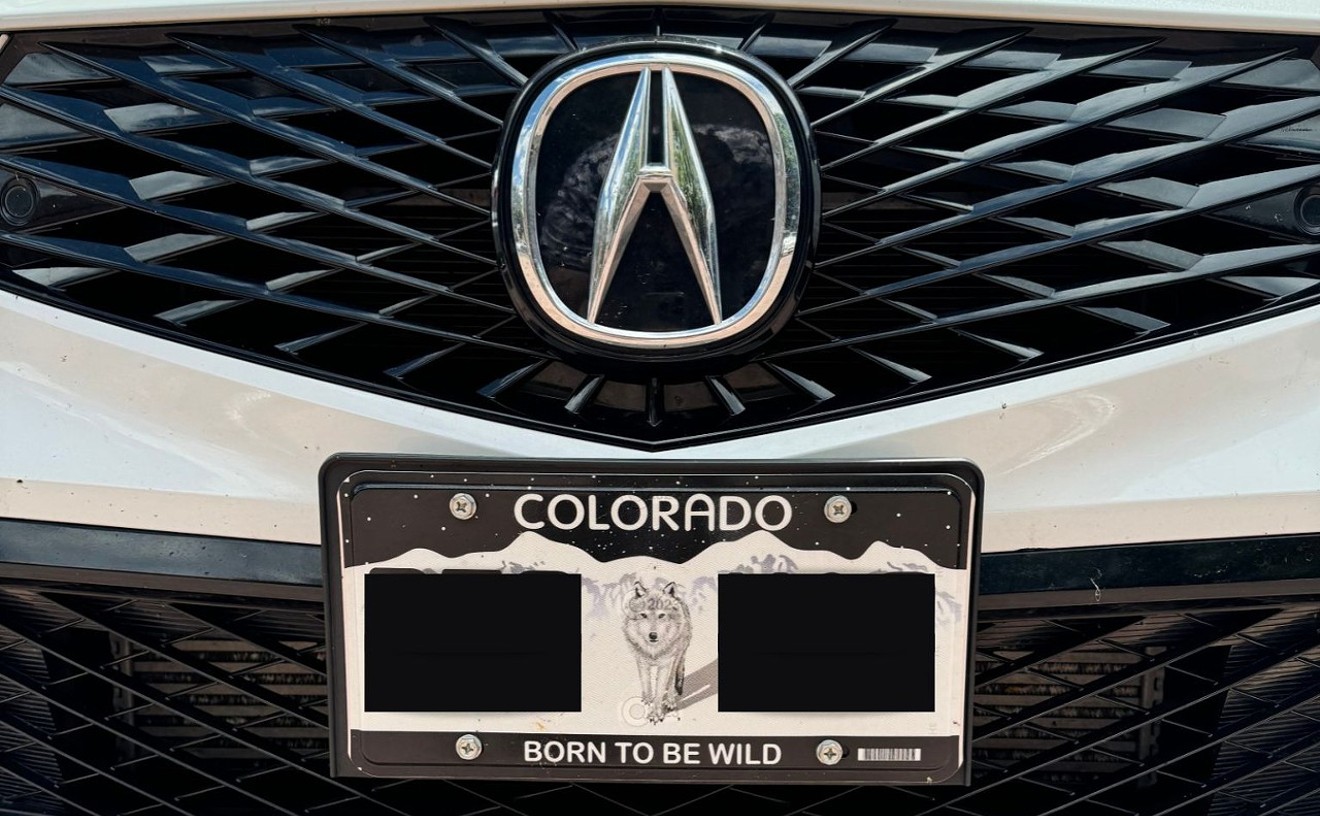Since 2018, the First Universalist Church of Denver has dramatically reduced its environmental impact, emitting nearly 100 fewer metric tons of carbon dioxide after installing solar panels and a geothermal heat pump temperature-regulation system.
As part of an almost $4.5 million project to upgrade the facility at 4101 East Hampden Avenue between 2015 and 2018, the church installed $443,000 worth of renewable-energy improvements. Getting the funding to do so back then proved tricky.
“When the capital campaign was completed, we found that we didn't have enough money to do all the things that we wanted,” church member Milt Hetrick recounted at an October 2 event at First Universalist, discussing how houses of worship can go green.
“Our dream of putting solar panels on and getting off of fossil fuels for heating the facility were deleted," he said. "However, the Board of Trustees allowed us to try to find third-party financing to bring the whole system back.”
Eventually, the church’s Green First Task Force was able to coax parishioners to donate an extra $208,000 toward the $443,000 effort, with a small group of members paying into a $235,000 fifteen-year loan with 1.5 percent interest.
“I don't think there's a better community investment out there,” Tom Abood, a Green First Task Force member, said at the Monday night event.
The loan is revenue-neutral for First Universalist since the amount it pays off each year is equal to what the church paid in utilities before it installed the solar and heat pump systems. However, the church didn’t plan for just how popular the space would become after the upgrades, so it still has energy bills to pay.
According to Hetrick, First Universalist paid Xcel Energy about $18,000 per year before the renovation. In 2019, the last pre-COVID full operating year on record, it paid the energy company about $6,000.
Activity went up 20 to 30 percent thanks to the renovation, so the church used more electricity than it had before.
“What we’re finding is, young members really take a look at what is our carbon footprint, what are we doing for the environment,” Abood noted. This drove church membership in the younger demographic.
Since the church wants to be carbon-free, it’s planning a phase-two project to swap out its natural gas stove and ovens for electric models, while also installing extra solar panels and solar battery storage to account for the higher energy use. This will cost $150,000, and First Universalist is hoping funding won’t be as tricky this time around thanks to federal incentives in the Inflation Reduction Act, known as the IRA, that were passed by Congress in 2022.
“Thank goodness things have changed since five years ago,” Hetrick said. “Nonprofits and churches, schools, et cetera, can take advantage of these IRA direct payments.”
Typically, churches — which are tax-exempt — can’t access tax credits, but the IRA has a provision that says faith-based tax-exempt organizations can get 30 percent of the cost of solar installation projects back. “In this particular case, they're waiving that,” explained Danny Katz, executive director of the Colorado Public Interest Research Group, who gave information about the IRA benefits to the religious leaders who gathered on Monday.
“They're basically pretending you paid taxes and giving you the 30 percent back," he said, noting how houses of worship can even get up to 50 percent back through additional credits.
If the organization is located in what is called an “energy community” — which is usually a low-income part of a particular city — the organization can get an additional 10 percent of their project cost back. If the project uses domestically manufactured equipment, religious facilities can get another 10 percent back.
Even better, there’s no cap on funding; any organization that qualifies and applies will get the direct payment.
CoPIRG wants to get the word out, creating its own fact sheet about how the IRA direct payments work. “We want to make sure we're getting as much of these dollars into the Colorado community as possible,” Katz said.
Those who use the program will have to first spend their own money, then file the project on their taxes and get reimbursed; Katz noted that because this is the first year of the IRA incentives, there isn’t an exact timeline on how long reimbursement will take once taxes are filed. There are also options to add geothermal systems and battery storage.
In Denver, the office of Climate Action, Sustainability & Resiliency has a program to fund 100 percent of sustainability upgrades for organizations that are human service providers, which can include houses of worship.
First Universalist wants other religious organizations to see that major sustainability upgrades are possible, offering a tour to anyone who is interested. Along with solar and geothermal, the church took other green measures — like using beetle-kill wood from Colorado for the artistic ceiling of its sanctuary and adding pipes in the roof to line up with the sun’s path for the summer solstice, winter solstice and equinox — to encourage a connection with nature.
So far, the upgrades have brought dividends for First Universal, even without federal dollars.
“There's a funny story about how the first time we used it was Christmas Eve,” Hetwick recalls. “We had our service, and people flocked into the sanctuary. … It turned out that we hadn't been properly educated on how to use the thermostat, and so by the end of the service, it was about 80 degrees in there, because there were 300 people, and each person was like a 100-watt lightbulb.”
The church has since adjusted the thermostat settings, and looks forward to other houses of worship adopting similar green technologies.
“The IRA is actually also this incredible organizing opportunity,” said Tom Weiler, lead organizer with faith-based organizing group Together Colorado, at Monday's event. “Especially when an institution that is a trusted institution like a church, like a synagogue, like a school, goes green. … I think of it as a catalyst that unlocks people.”
[
{
"name": "Air - MediumRectangle - Inline Content - Mobile Display Size",
"component": "12017618",
"insertPoint": "2",
"requiredCountToDisplay": "2",
"watchElement": ".fdn-content-body",
"astAdList": [
{
"adType": "rectangle",
"displayTargets": "mobile"
}
]
},{
"name": "Editor Picks",
"component": "17242653",
"insertPoint": "4",
"requiredCountToDisplay": "1",
"watchElement": ".fdn-content-body",
"astAdList": [
{
"adType": "rectangle",
"displayTargets": "desktop|tablet"
},{
"adType": "rectangle",
"displayTargets": "desktop|tablet|mobile"
}
]
},{
"name": "Inline Links",
"component": "18838239",
"insertPoint": "8th",
"startingPoint": 8,
"requiredCountToDisplay": "7",
"maxInsertions": 25
},{
"name": "Air - MediumRectangle - Combo - Inline Content",
"component": "17261320",
"insertPoint": "8th",
"startingPoint": 8,
"requiredCountToDisplay": "7",
"maxInsertions": 25,
"watchElement": ".fdn-content-body",
"astAdList": [
{
"adType": "rectangle",
"displayTargets": "desktop|tablet"
},{
"adType": "rectangle",
"displayTargets": "desktop|tablet|mobile"
}
]
},{
"name": "Inline Links",
"component": "18838239",
"insertPoint": "8th",
"startingPoint": 12,
"requiredCountToDisplay": "11",
"maxInsertions": 25
},{
"name": "Air - Leaderboard Tower - Combo - Inline Content",
"component": "17261321",
"insertPoint": "8th",
"startingPoint": 12,
"requiredCountToDisplay": "11",
"maxInsertions": 25,
"watchElement": ".fdn-content-body",
"astAdList": [
{
"adType": "leaderboardInlineContent",
"displayTargets": "desktop|tablet"
},{
"adType": "tower",
"displayTargets": "mobile"
}
]
}
]

